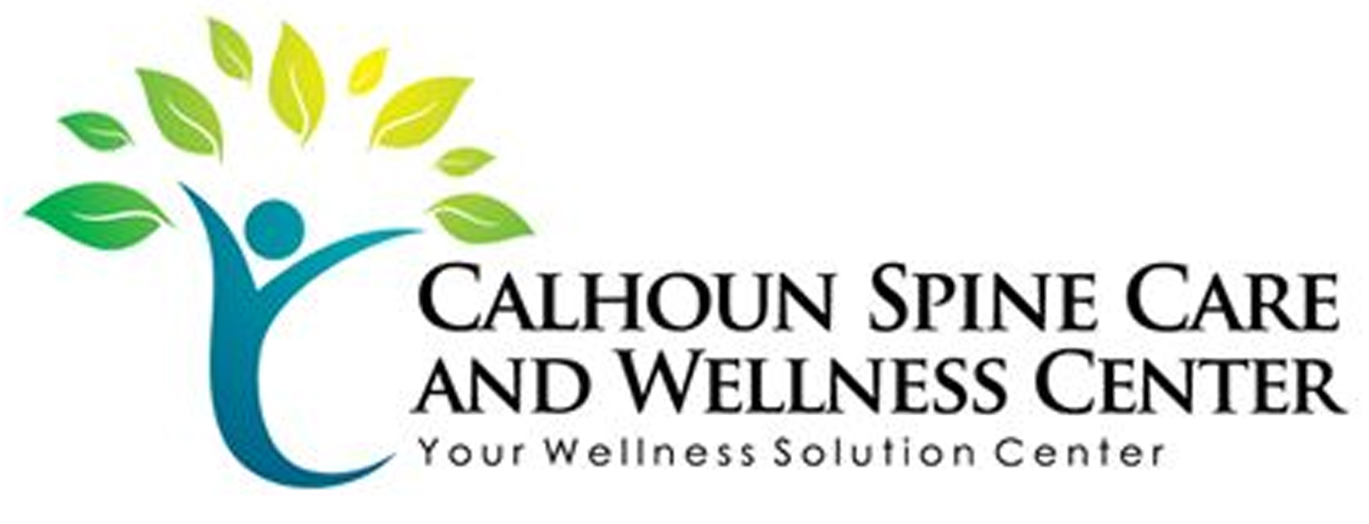If you're struggling with sciatica in Calhoun, you might find that a mix of targeted techniques can help ease your discomfort. From physical therapy exercises to chiropractic adjustments, each method plays a role in your recovery. You'll want to reflect on how lifestyle changes, ergonomic furniture, and even home remedies can enhance your relief. But what specific techniques should you prioritize to guarantee you're on the right path? Understanding the options available can make all the difference in managing your pain effectively.
Understanding Sciatica
Sciatica affects millions of people, making it a common yet often misunderstood condition. If you're experiencing sciatica, you're likely dealing with pain that radiates along the sciatic nerve, which runs from your lower back through your hips and down each leg. This discomfort can stem from various causes, including a herniated disc, spinal stenosis, or even muscle spasms. Understanding sciatica is vital for managing your symptoms effectively.
You might notice that the pain varies in intensity and can be sharp, burning, or even numb. It often worsens when sitting, sneezing, or coughing. The symptoms can also fluctuate based on your activities, making it essential to pay attention to what exacerbates your pain. Identifying these triggers can be a game-changer in your daily life.
Sciatica typically affects one side of your body, but in some cases, you might feel it on both sides. It's important to remember that while sciatica is often a symptom of an underlying issue, it can also be a standalone condition. Knowing the distinction between sciatica and other types of back pain can help you communicate better with healthcare professionals.
Physical Therapy Options
When it comes to alleviating sciatica, physical therapy offers a range of effective options.
You'll find that stretching and strengthening exercises, manual therapy techniques, and education on posture and ergonomics can make a significant difference in your recovery.
Let's explore how these strategies can help you regain comfort and mobility.
Stretching and Strengthening Exercises
Many people find that incorporating stretching and strengthening exercises into their routine can greatly alleviate sciatica symptoms.
These exercises help improve flexibility, strengthen your core, and reduce tension in the muscles surrounding your sciatic nerve.
Here are three effective exercises to evaluate:
- Piriformis Stretch: Lie on your back, bend your knees, and cross one ankle over the opposite knee. Gently pull the uncrossed leg towards your chest. Hold for 20-30 seconds, then switch sides.
- Hamstring Stretch: Sit on the floor with one leg extended and the other bent. Reach toward your toes of the extended leg, keeping your back straight. Hold for 20-30 seconds, then switch legs.
- Bridges: Lie on your back with your knees bent and feet flat on the floor. Lift your hips towards the ceiling, squeezing your glutes. Hold for a few seconds, then lower back down. Repeat 10-15 times.
Incorporating these exercises into your daily routine can help strengthen your muscles, improve mobility, and reduce your sciatica discomfort.
Always consult with a healthcare professional before starting any new exercise program.
Manual Therapy Techniques
Manual therapy techniques can play an essential role in alleviating sciatica symptoms and promoting recovery. These hands-on methods focus on manipulating and mobilizing soft tissues and joints to relieve pain and improve function. When you work with a skilled therapist, they'll assess your condition and tailor treatments specifically to your needs.
One technique you might experience is manual mobilization, where the therapist gently moves your joints to enhance mobility and reduce discomfort.
Another effective approach is myofascial release, which targets tight fascia to relieve tension and improve circulation. You may also benefit from soft tissue techniques, like massage, which can help relax muscles and alleviate pain.
Incorporating these manual therapy techniques into your treatment plan can greatly improve your overall well-being. Not only can they relieve pain, but they can also enhance your range of motion and promote better posture.
With consistent sessions, you'll likely notice a reduction in sciatica symptoms, allowing you to return to your daily activities with more ease. Don't hesitate to discuss these options with your therapist to find the best approach for your recovery.
Posture and Ergonomics Education
Your posture and ergonomics play an essential role in managing sciatica symptoms. Poor posture can put extra pressure on your spine and nerves, exacerbating your pain. By making a few adjustments, you can greatly alleviate your discomfort.
Here are three key areas to focus on for better posture and ergonomics:
- Chair Height: Make sure your chair supports your lower back. Your feet should rest flat on the ground, and your knees should be at a right angle. If your chair is too high, use a footrest.
- Desk Setup: Position your computer screen at eye level to avoid straining your neck. Keep your keyboard and mouse close enough that you can use them without reaching excessively.
- Body Alignment: Sit upright with your shoulders relaxed and back. Avoid crossing your legs, as this can misalign your spine. Instead, keep your hips and knees at the same level.
Chiropractic Adjustments
Chiropractic adjustments can greatly improve your spinal alignment, which may reduce the pressure on your sciatic nerve.
By utilizing specific pain reduction techniques, you might experience immediate relief from discomfort.
Plus, a chiropractor can create a personalized treatment plan tailored to your unique needs, ensuring you get the best care possible.
Spinal Alignment Benefits
When it comes to relieving sciatica, spinal alignment plays an essential role in alleviating pain and improving mobility. Proper spinal alignment helps reduce nerve pressure, which can markedly ease your discomfort.
Here are three key benefits you'll experience with improved spinal alignment:
- Enhanced Nerve Function: When your spine is correctly aligned, it relieves pressure on the sciatic nerve, allowing for better communication between your brain and body. This can lead to reduced pain and increased sensation in your lower extremities.
- Improved Posture: Chiropractic adjustments promote better posture, which can prevent further strain on your back and hips. Good posture not only alleviates pain but also enhances your overall body mechanics.
- Increased Range of Motion: With proper alignment, your body can move more freely. This increased range of motion helps you engage in daily activities without the burden of discomfort, making it easier for you to stay active.
Embracing spinal alignment techniques through chiropractic adjustments can lead to notable improvements in your sciatica symptoms, helping you reclaim your quality of life.
Pain Reduction Techniques
Improving spinal alignment sets the stage for effective pain reduction techniques, particularly through chiropractic adjustments. When you visit a chiropractor, they'll assess your spine and identify misalignments that might be contributing to your sciatica pain. By correcting these issues, chiropractic adjustments can relieve pressure on the sciatic nerve, alleviating discomfort and promoting better overall function.
During an adjustment, you'll experience targeted manipulations that realign your vertebrae. This process not only helps reduce pain but also improves mobility. Many people notice a significant decrease in their symptoms after just a few sessions.
It's crucial to communicate openly with your chiropractor about the intensity and location of your pain, as this information can guide their approach.
In addition to immediate relief, ongoing chiropractic care can help maintain spinal alignment, preventing future flare-ups. Your chiropractor may also incorporate complementary techniques like soft tissue therapy or stretching exercises into your sessions.
These approaches work in tandem with adjustments to enhance pain relief and support your healing journey. By prioritizing chiropractic adjustments, you're taking a proactive step toward managing your sciatica effectively.
Personalized Treatment Plans
A personalized treatment plan is crucial for effectively addressing your sciatica through chiropractic adjustments. This tailored approach not only targets your specific symptoms but also considers your overall health and lifestyle.
Here's what you can expect during your journey to relief:
- Initial Assessment: Your chiropractor will conduct a thorough evaluation, including your medical history and a physical examination. This helps identify the root causes of your sciatica.
- Customized Adjustments: Based on the assessment, you'll receive chiropractic adjustments designed to realign your spine and improve nerve function. These adjustments can alleviate pressure on the sciatic nerve, reducing pain and discomfort.
- Ongoing Monitoring: Regular follow-up visits will guarantee your treatment plan evolves as needed. Your chiropractor will track your progress and make necessary adjustments to maximize your relief and promote long-term wellness.
Medication and Pain Relief
Medication plays an essential role in managing sciatica pain and providing relief. When you experience the sharp, shooting pains characteristic of sciatica, over-the-counter pain relievers can be your first line of defense. Nonsteroidal anti-inflammatory drugs (NSAIDs) like ibuprofen or naproxen can help reduce inflammation and alleviate pain, allowing you to regain mobility.
If over-the-counter options don't cut it, your doctor might prescribe stronger medications. Prescription NSAIDs or muscle relaxants can be effective in managing more severe pain. Sometimes, corticosteroids are used to reduce inflammation around the affected nerves, providing temporary relief. You may receive these either through oral tablets or injections directly into the painful area.
In cases where nerve pain is particularly debilitating, your healthcare provider might recommend anticonvulsants or antidepressants. These medications can help modify how your brain perceives pain and can be beneficial for chronic sciatica sufferers.
It's important, however, to communicate openly with your doctor about your pain and any side effects you experience. Finding the right medication can be a process of trial and error, and your doctor can help tailor a plan that suits your specific needs.
While medications can provide significant relief, they should ideally be part of a thorough treatment plan that includes physical therapy and lifestyle adjustments.
Home Remedies and Techniques
While medications can offer significant relief from sciatica pain, many people find comfort in home remedies and techniques that complement their treatment plan.
Incorporating these strategies into your daily routine can help alleviate discomfort and promote healing. Here are three effective home remedies you might want to try:
- Heat and Cold Therapy: Alternating between heat and cold packs can soothe inflamed nerves and improve circulation. Start with a cold pack for 15-20 minutes to reduce swelling, then switch to a heating pad to relax tight muscles.
- Gentle Stretching: Engaging in gentle stretches can help relieve tension in your back and legs. Focus on stretches that target the lower back, hips, and hamstrings. Yoga poses like the pigeon pose or child's pose can be particularly beneficial for sciatica relief.
- Essential Oils: Some essential oils, like peppermint or lavender, can help ease pain and inflammation. Dilute a few drops in a carrier oil and gently massage it into the affected area. You can also use a diffuser to inhale these soothing scents throughout the day.
Incorporating these home remedies into your routine can enhance your overall comfort and well-being.
Remember, though, it's crucial to listen to your body and consult a healthcare professional if you have any concerns.
Lifestyle Modifications
Making simple lifestyle modifications can greatly impact your sciatica management and overall well-being. One of the first steps you can take is to improve your posture.
Whether you're sitting at a desk or standing, maintaining a neutral spine can alleviate pressure on your sciatic nerve. Consider using ergonomic furniture or support cushions that promote good posture.
Incorporating regular exercise into your routine is another vital modification. Low-impact activities like walking, swimming, or cycling can strengthen your core muscles and improve flexibility.
Aim for at least 30 minutes of moderate activity most days of the week. Don't forget to include stretching exercises to keep your muscles supple and reduce tension around the sciatic nerve.
Additionally, pay attention to your weight. Carrying excess weight can put more strain on your spine and exacerbate sciatica symptoms.
A balanced diet rich in fruits, vegetables, lean proteins, and whole grains can help you manage your weight effectively.
Finally, assess your daily habits. If you find yourself sitting for extended periods, make it a point to stand and stretch every hour.
Incorporating these small breaks can notably relieve pressure on your back and hips.
Alternative Therapies
Alternative therapies can offer valuable relief for those suffering from sciatica. These approaches often complement traditional treatments and can help you manage pain and improve your overall well-being.
Here are three alternative therapies you might consider:
- Acupuncture: This ancient Chinese practice involves inserting thin needles into specific points on your body. Many people find it effective for reducing pain and promoting relaxation. Research suggests acupuncture can stimulate the release of endorphins, helping to alleviate sciatica symptoms.
- Chiropractic Care: A chiropractor uses hands-on spinal manipulation to align your body's musculoskeletal structure. By doing so, they may relieve pressure on your sciatic nerve. Regular visits can lead to improved mobility and less discomfort, allowing you to engage more fully in daily activities.
- Massage Therapy: Therapeutic massage can notably reduce muscle tension in the lower back and legs, which may contribute to sciatica pain. A skilled massage therapist can help increase circulation, promote relaxation, and alleviate discomfort, making it easier for you to manage your symptoms.
Incorporating these alternative therapies into your routine can provide a holistic approach to sciatica relief.
However, it's crucial to consult with a healthcare professional before starting any new treatment. By exploring these options, you'll be better equipped to find the relief you need and enhance your quality of life.
Exercise and Stretching
Exercise and stretching play an essential role in relieving sciatica pain and improving mobility. When you incorporate specific exercises into your routine, you can strengthen the muscles around your spine and pelvis, which helps support your lower back. This support can greatly reduce pressure on the sciatic nerve.
Start with gentle stretches that target the lower back, hips, and legs. A few effective stretches include the piriformis stretch, knee-to-chest stretch, and seated hamstring stretch. Hold each stretch for about 30 seconds, and remember to breathe deeply as you ease into each position. This not only enhances flexibility but also encourages blood flow to the affected areas, promoting healing.
In addition to stretching, consider low-impact aerobic exercises like walking, swimming, or cycling. These activities can improve your cardiovascular health without putting too much strain on your back. Aim for at least 30 minutes of aerobic activity most days of the week, adjusting the intensity based on your comfort level.
Strengthening exercises are also beneficial. Focus on core stability exercises, such as planks or bridges, to support your back and maintain proper posture. You'll want to avoid any movements that involve heavy lifting or twisting until you feel more comfortable.
Always listen to your body. If an exercise exacerbates your pain, modify or skip it entirely. Consistency is key, so try to integrate these exercises and stretches into your daily routine for maximum relief.
When to Seek Professional Help
Recognizing when to seek professional help is crucial for effectively managing sciatica pain. While some discomfort may improve with home remedies, there are key signs that indicate it's time to consult a healthcare professional. Ignoring these signs can lead to prolonged pain and potential complications.
Here are three scenarios where you should definitely reach out for help:
- Persistent Pain: If your sciatica pain lasts longer than a week or worsens despite self-care measures, it's time to see a doctor. Chronic pain can indicate underlying issues that require medical intervention.
- Numbness or Weakness: When you start experiencing numbness, tingling, or weakness in your legs, don't hesitate to seek help. These symptoms may suggest nerve damage, which can worsen if left untreated.
- Bladder or Bowel Issues: If you notice loss of bladder or bowel control, this is a medical emergency. This could indicate cauda equina syndrome, a serious condition that requires immediate attention.
Conclusion
Incorporating these techniques for sciatica relief can make a significant difference in your daily life. From targeted exercises and chiropractic adjustments to lifestyle changes and home remedies, you have various options to manage your pain effectively. Remember to stay proactive and consult healthcare professionals for personalized guidance. With the right approach, you can regain control over your body and enjoy a more comfortable, active lifestyle in Calhoun. Don't hesitate to seek help when needed!



